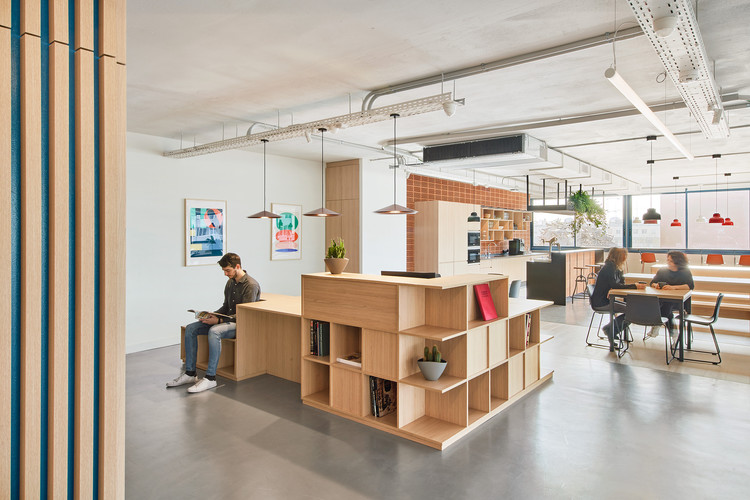Inside the Hub – StartupSmart
It’s Thursday afternoon at Hub Melbourne and I’m eating hot cross buns with a professional Swedish poker player and the founder of a catering business that provides opportunities for homeless people to get into the workforce.
Welcome to the eclectic world of co-working. Hub Melbourne is a trailblazer for a collaborative working trend that has been enthusiastically embraced by start-ups in the US and Europe and is now starting to take hold in Australia.
Perched at the serious end of Melbourne’s Bourke Street, Hub Melbourne has more the feel of an incongruous hippy retreat than the future working template for the engine room of the Australian economy.
Casually dressed people slouch at squiggly desks or chat over coffee in an open-plan kitchen. Much like a kindergarten for grown-ups, pieces of card adorned with pictures of members are strung up over the communal dining table. Members have written what they need from the working space and what they can provide to it on their mini profiles.
Hub of ideas
Around 80 entrepreneurs and NGOs use the Hub space, with a further 100 coming for the regular talks and workshops held at the space. Brad Krauskopf, who founded Hub Melbourne, has plans to renovate an adjoining ballroom to hold many more.
Hub Melbourne launched in January last year but has only recently started to take on members. Its philosophy is simple – to provide a physical space for co-working, meetings and events.
There is a mandate, as part of the building’s lease, for participants to work towards social good, but most members are profit-making start-ups, who rub shoulders with big business, NGOs and government agencies.
Krauskopf started up Hub Melbourne after working at Hub Madrid while travelling in Europe. Upon returning to Australia, he realised that there was a need for an area for start-ups to gather, share ideas and enjoy low-cost desk space.
The Hub brand is headquartered in Vienna, Austria and has 28 outlets around the world. The Melbourne arm, the first in Australia, pays an ongoing percentage of its profits to use the name. However, Krauskopf rejects the suggestion he is a franchisee.
“That term invokes a cookie cutter and controlled model that isn’t the case,” he says. “It’s amazing how different each Hub looks like around the world.”
Collaboration is at the heart of Hub Melbourne, Krauskopf says. “Like any co-working, you can come in and do your work and speak to no one, but the real value is in the collaboration and the support.
“We literally designed the place with the members in mind. The ballroom space is 400 square metres and it will be a multi-purpose theatre, co-working and arts space. It will facilitate many more connections between people.”
“About 50% of people come to the Hub for learning and collaboration. They may have an office at home, but they come here to learn. We have about 20 gatherings and activities a week. For example, we have had a banking clinic and a lecture on social media. We have Mindful Mondays, where there’s a meditation class.”
Co-working on the rise
Hub Melbourne has a diverse membership. The youngest member is 15 and the oldest is 80. Although the space is crammed with bespectacled, serious young people gazing at Macs, Krauskopf claims that just 10% are tech start-ups, with an average member age of 35.
Hub Melbourne is in a vanguard of co-working spaces that are starting to spark the interest of Australian start-ups. In Sydney, there is Vibewire and The Hive also offers a place to share ideas with other budding entrepreneurs.
However, Krauskopf argues that the shift isn’t just towards the physical sharing of space with other businesses. It’s about working together, rather than separately.
“The industry is in its infancy in Australia but it’s becoming almost impossible to do anything in isolation these days,” he says. “The world is too complex and the skills you need in a business are too diverse.”
“People want new, flexible ways of working and this is the result. There’s also the environmental side to it – the carbon footprint is eight times less than normal.”
“We often think about who we want in the space. If you’re a web designer, it doesn’t really help you to have 20 other web designers around you. We look for gaps. We want lawyers and accountants.”
Culture shift
But aren’t businesses a little reticent of conducting sales calls and discussing IP-sensitive ideas with dozens of strangers sitting around them?
Advertisement

